Types and varieties of junipers
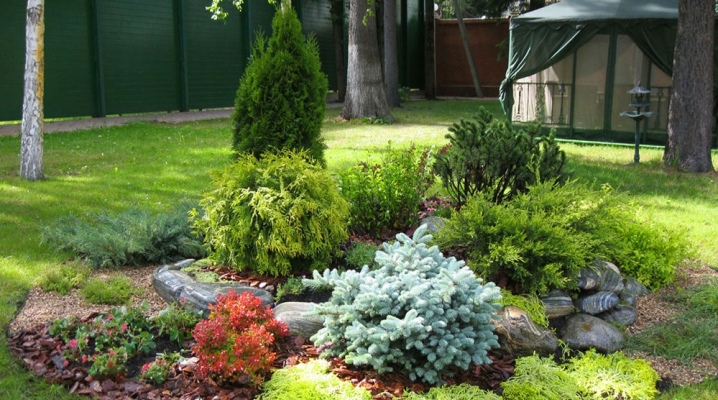
Juniper is a very beautiful culture that is actively used in landscape design. The variety of shapes allows you to choose an option that is ideal for a particular garden. Moreover, most varieties are frost-resistant, unpretentious to conditions and care.
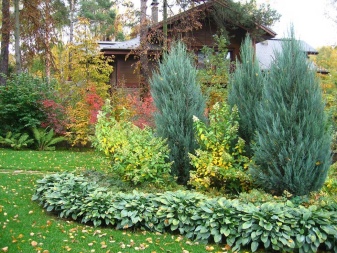

Varieties in the shape of the crown
In addition to the colors of the needles (from bright green to silver-blue tones), junipers also differ in shape.
Pyramidal (conical)
Most of the species are tall trees (up to 4 meters). The pyramidal crown has a dense, fairly even structure, slightly tapering towards the top. The branches are arranged vertically. The tops of such trees are usually pointed.
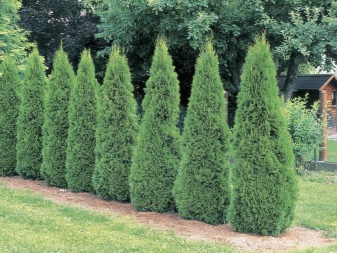

Columnar
This type of culture is similar to the previous one, so they are often confused. The difference between this shape is approximately the same volume of the upper and middle parts. The apex can be narrow or loose (indefinite shape).
Columnar, like pyramidal, plants look good in group plantings. For example, you can make a green wall out of them. It is easy to maintain a neat shape with a regular haircut.
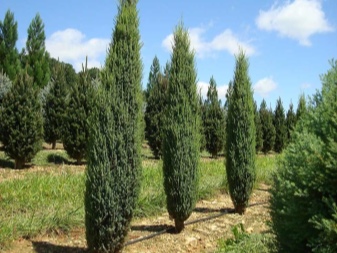

Weeping
These are trees with unusual twisted trunks, long drooping (hanging) branches and a top. This culture looks impressive as a key element of an unusual green composition. Often such plants are located near artificial reservoirs (ponds, fountains, waterfalls).
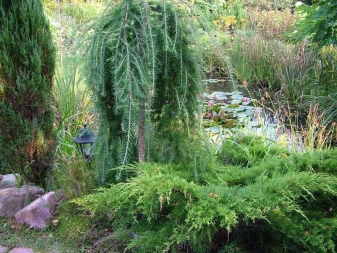
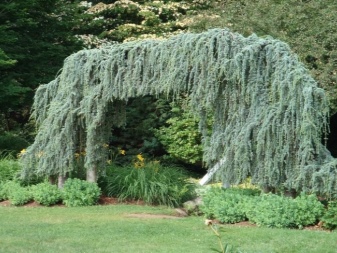
Creeping
These varieties are small in stature and sprawling long branches. Many of them appear to be spread over the ground and resemble moss. Usually these junipers are irregular in shape.
In the garden, they can be complemented by flowers, other low plants. Often, creeping species adorn the slopes. They look especially beautiful when surrounded by stones.
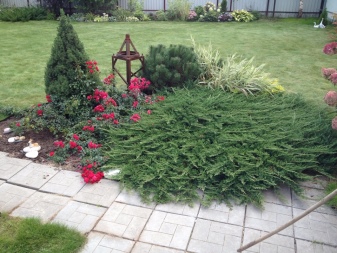
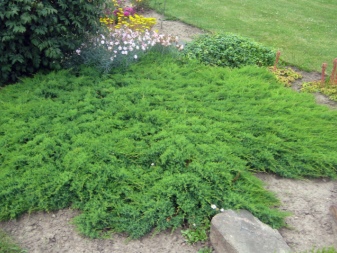
Globular
This is an uncharacteristic form for this culture. Some undersized young plants do look like a ball, but when they grow, they usually change the shape of the crown. However, the round shape can be maintained by frequent haircuts.
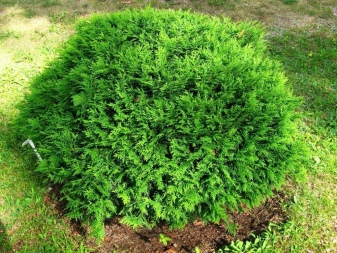
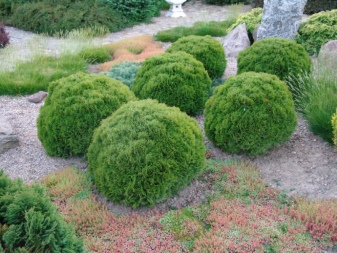
Common species and their varieties
Today, about a hundred varieties of juniper are known. Some appeared naturally, others were bred on purpose. Experts distinguish several main groups, each of which includes a variety of varieties. Let's consider the description of the most popular ones.
Ordinary
This species is the most common in nature. It is frost-resistant, easily tolerates heat. Representatives of this species can grow on almost any soil (although they prefer sandy soil and limestone more). Most of them calmly tolerate a lack of moisture, they can develop in the shade and in the bright sun.
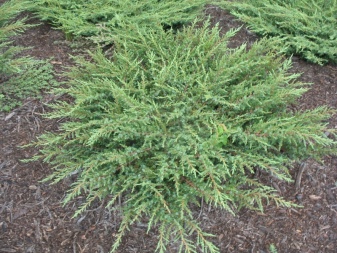
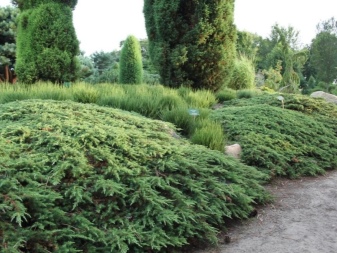
Such junipers cannot be called fast-growing. However, the high decorativeness of plants is worth the wait. In addition, this feature allows them to be used for growing in the bonsai style.
This group brings together a variety of varieties, often externally dissimilar to each other. They have different heights, shades of needles, shapes. This allows everyone to find an option to their liking. Let's look at several varieties for example.

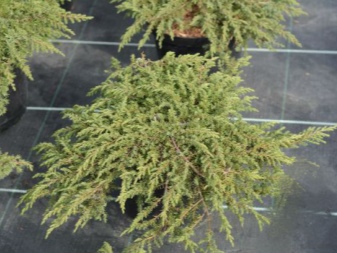
"Gold Con"
As the name implies, the variety is distinguished by the golden color of the needles. By early summer, yellow gold turns into pleasant green. In autumn, the plant turns bronze brown.A beautiful change in color allows us to call the culture a unique decoration of any garden.
The variety grows up to 2 m, has the shape of a cone. Seasonal growth is 10-15 cm. At the end of summer, the shrub is covered with edible blue-black berries. Juniper of this variety is undemanding to the type of soil, but it is better that it be light and drained.
It is advisable to plant the "Gold Con" in a sunny place. In the shade, the needles lose their characteristic golden color, turning into green tones.
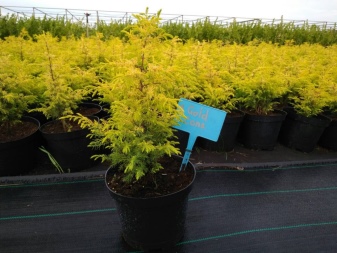
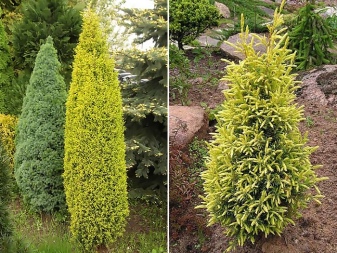
"Khyrebnika"
This tree variety is native to Ireland. Today it is successfully grown in Russia as well. The tree can grow up to 4 m. The crown has a regular column shape with a narrow top. Despite the fact that the juniper seems to be prickly, its needles are quite soft. The color is light green with an ash tint.
The variety is unpretentious, grows on any soil, prefers sunny areas or partial shade. Drought resistance is average. When located in an open area, it is advisable to periodically irrigate the crop. When dry, the lower part of the tree may lose its juiciness and decorative appearance. However, it is not worth overmoistening the soil, the best option is sprinkling.
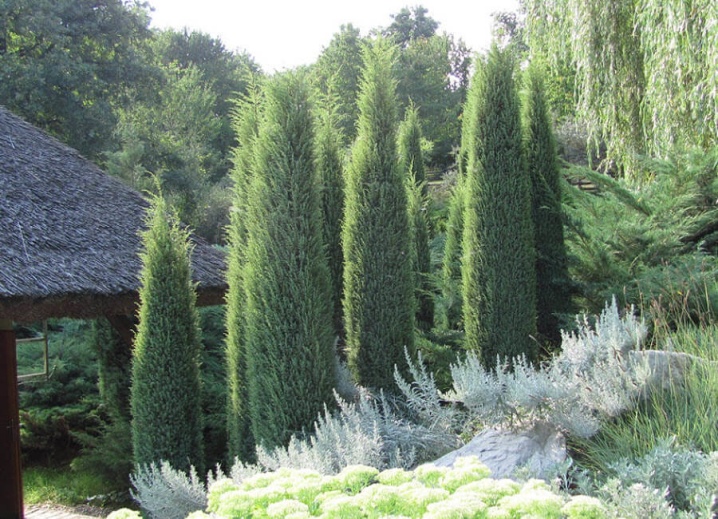
"Green Carpet"
The name of the variety translates as "green carpet" and this is not surprising. A low-growing bush (about 20 cm) creates the appearance of a fluffy coniferous lawn. The culture does not have a central stem. The branches grow horizontally, often intertwining with each other.
The flat shape of the plant is complemented by a pleasant greenish-smoky color. These decorative qualities make the variety very popular with landscape designers.
Such a juniper looks great on alpine slides, slopes, lawns.
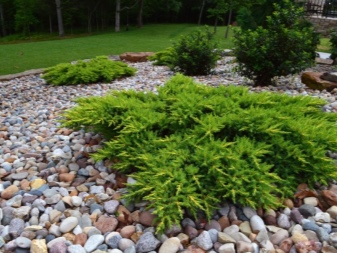
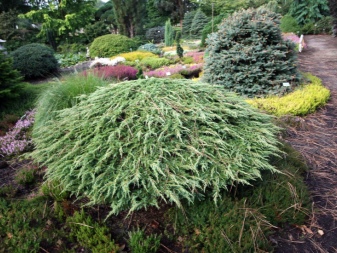
"Suecika"
This is another well-known columnar cultivar. Adult plants can grow up to 4 m. The crown is quite dense and prickly. Shade of gray-green. The variety easily tolerates drought, frost, small shade. Does not like waterlogging.
The tree lends itself well to shearing, which allows you to give it a beautiful shape. The variety is suitable for creating bonsai-style compositions.
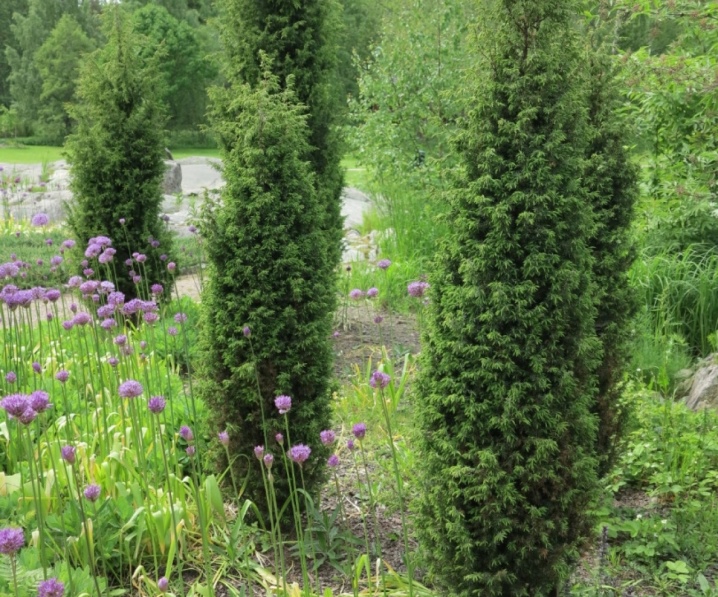
Goldschatz
Plants of this variety attract attention with their bright golden needles. Bushes are low (maximum 40 cm). In this case, the diameter of the crown of the plant can reach 150-170 cm. The ground cover crop grows rather slowly.
The maximum size is reached only by the age of 10. By winter, the juniper turns red with a copper tint. The blue berries of the bush are considered poisonous.
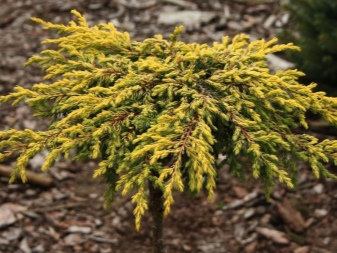
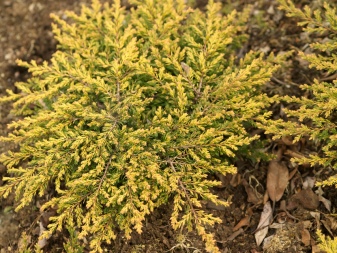
"Meyer"
This variety grows up to 1 m. The color is blue with a whitish bloom. This variety can only be grown in a non-severe climate. He does not tolerate frost well. In extreme cases, for the winter period, good insulation can be organized for the plant.
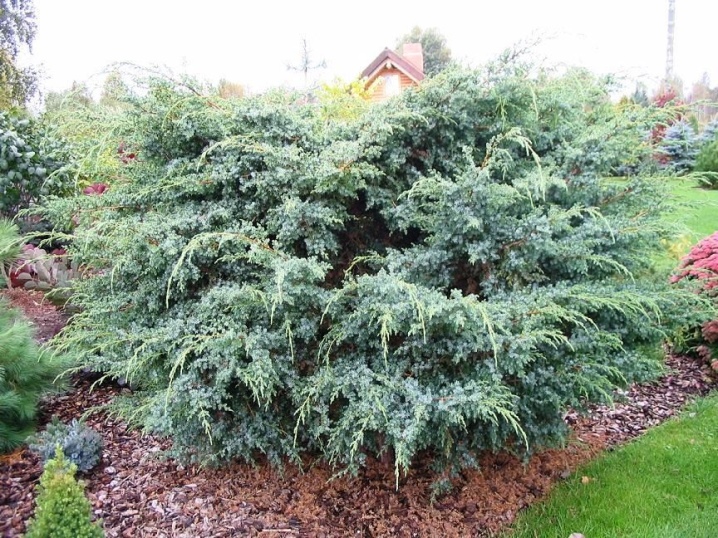
Virginia
This group includes many decorative forms of different heights with blue, green, variegated needles with white tips. Plants are unpretentious, have a developed root system, and are very decorative. In forests, this juniper is often grown for the subsequent manufacture of furniture and a pencil board. Therefore, it is often called the pencil tree.
For decorative purposes, you can use any variety. An additional advantage of each of them is a pleasant aroma that can cleanse the air from bacteria.
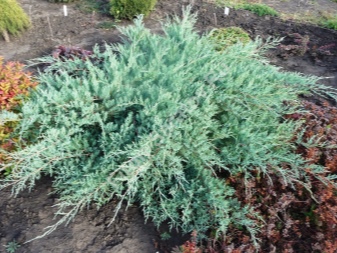

Gray Owl
It is a spreading bush that grows up to 2-3 m. The dense crown consists of blue smoky needles. The variety accepts pruning well. The resulting crown shape retains a neat appearance for a long time. The variety is unpretentious, but does not tolerate transplanting well. It grows slowly - the gardener will have to be patient.
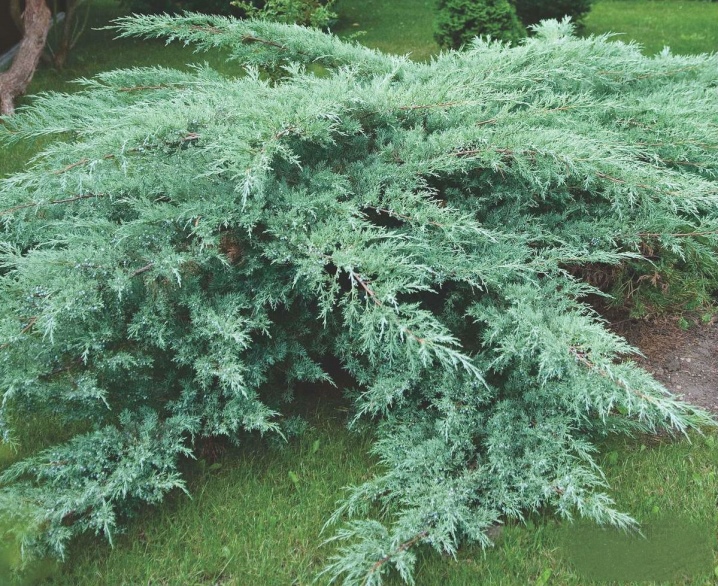
"Burkia"
This is one of the most attractive varieties in this group. The dense spreading crown has the shape of a pyramid. The needles have a beautiful bluish-green color. By winter, the plant turns purple.
The culture grows quickly, it can reach 3 m. In the sun, the tree develops better, it turns out to be wider and more luxuriant. Like many junipers, it does not tolerate waterlogging.
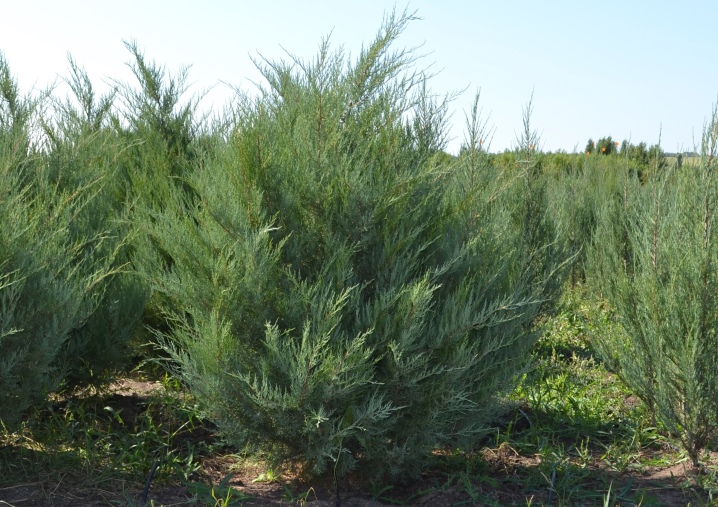
"Canaherty"
It is a fast growing, fairly tall variety. An adult plant can grow up to 5 m. The crown is in the form of a column or pyramid. The branches grow upward. The color of the needles is dark green.
With the onset of autumn, blue-white fruits appear on the tree. Culture loves light, unpretentious to the composition of the soil.
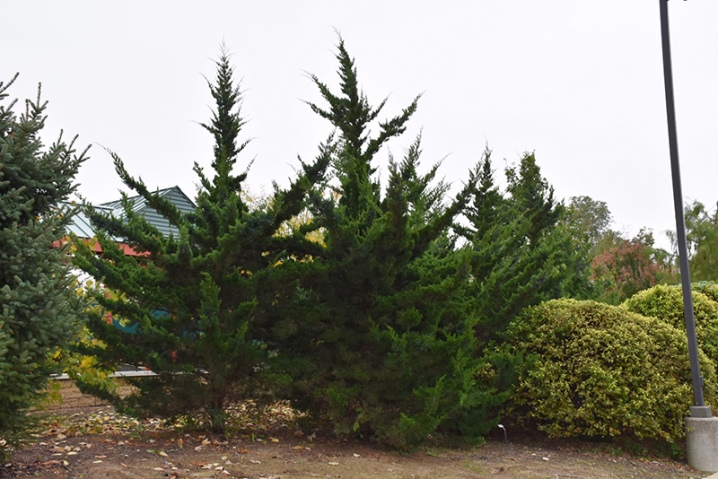
"Glauka"
It is a slender tall tree that can reach 6 meters in height. This variety grows quickly (up to 20 cm per year). The branches are directed upwards. The shape of the crown is columnar with a narrow apex.
Green needles with a bluish tint become bronze with the onset of cold weather. The tree lends itself well to shaping.
In landscape design, it is often used to decorate alleys. Green hedges from such a juniper are also very beautiful.
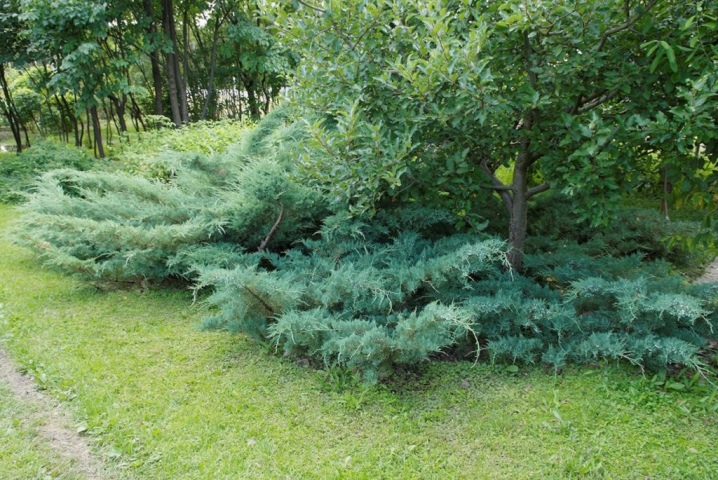
Cossack
This is the most common group. Plants are unpretentious. They easily endure any conditions, they are resistant to drought, cold, polluted air. All Cossack varieties are very decorative, but the berries that form on shrubs are inedible, and in some cases even poisonous.
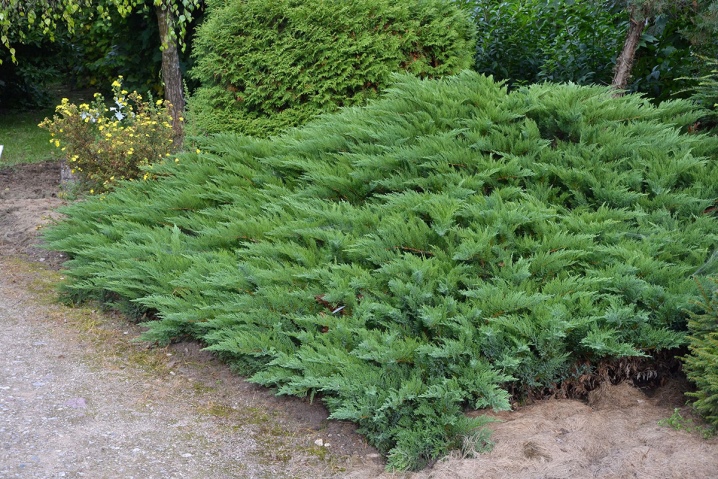
"Variegata"
This is a low-growing shrub (up to 1 m) with amazing variegated needles. One bush can combine green and light beige branches. The crown is neat, dense, shaped like a funnel. The variety is photophilous, but undemanding to other conditions. Looks great among roses, adorns alpine slides.
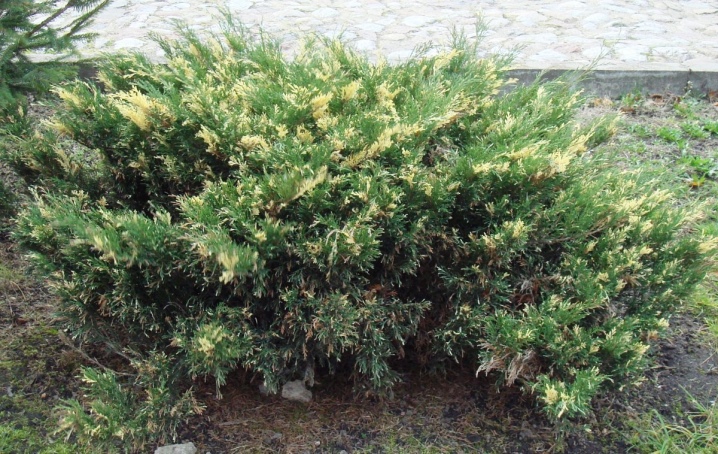
"Blue Danube"
This is a lush meter shrub with creeping branches. The annual growth is 20 cm. The color of the needles is light blue. By autumn, the culture becomes gray and remains so until spring. Black and blue berries are poisonous.
A distinctive feature of this variety is its specific smell. However, it repels pests, which is a plus for any gardener. You can grow the variety in any conditions, including urban ones. Culture can be used to decorate park areas.
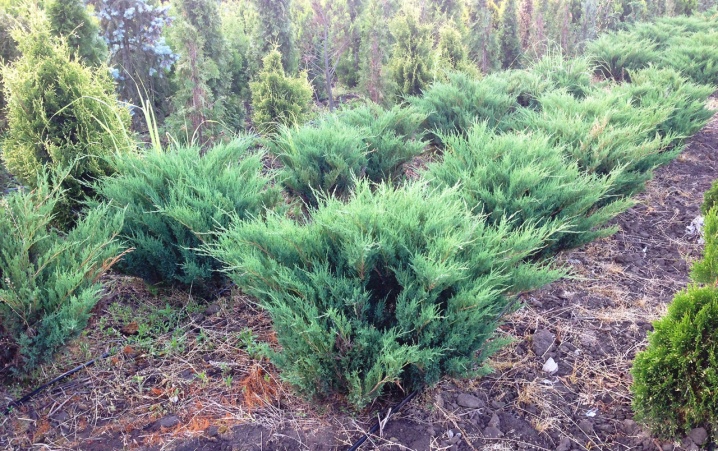
"Arcadia"
This is a rather interesting variety that forms a thick green “carpet” on the surface of the earth. The diameter of the crown is about 2 m. The height of the culture is only 40 cm. The needles are light green, fine-scaled, sometimes with a bluish tint. In young plants, it is prickly, but becomes soft with age.
The fruits of "Arcadia" are poisonous. The variety can withstand any negative environmental influences. It can even be grown near highways.
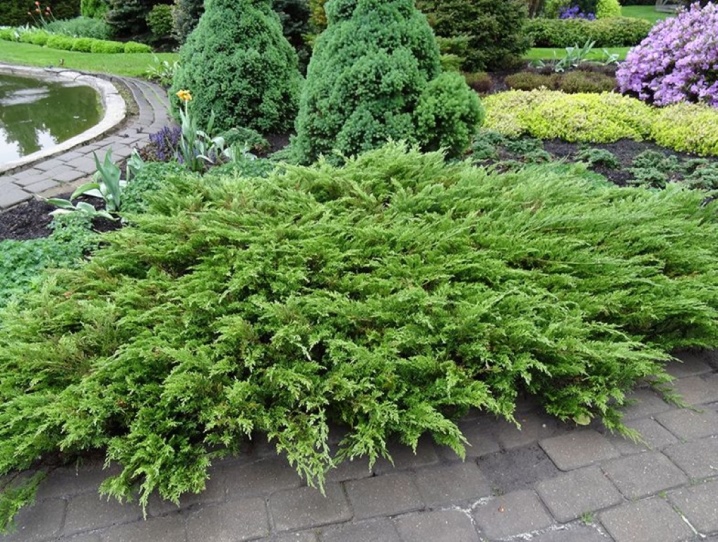
Mountain (rocky)
This group includes plants growing on the mountain slopes of the USA, Canada and Mexico. They are hardy, long-lived crops that can grow in both hot and cold climates. These junipers look harmonious in rocky gardens. At the same time, the varieties of the rock group are so different that it becomes possible to realize any idea of landscape design.

Skyrocket
This is one of the highest grades. Mature trees can grow up to 8 meters in height. In nature, this indicator can be even higher. The shape of the crown is pyramidal. The name of the variety translates as “rocket in the sky”, and indeed, the tree resembles a ship rushing upward.
The crown is dense, soft, pleasant bluish-green color. The root system is located close to the surface of the earth. Because of this, in strong winds, the tree begins to sway. If the plant tilts, it will not be easy to correct its shape. Therefore, it is better to choose a place protected from the winds for the plant. If the juniper is grown in harsh conditions, before the onset of winter, it is wrapped in nonwoven fabric and tied up.
This avoids damage to the branches.
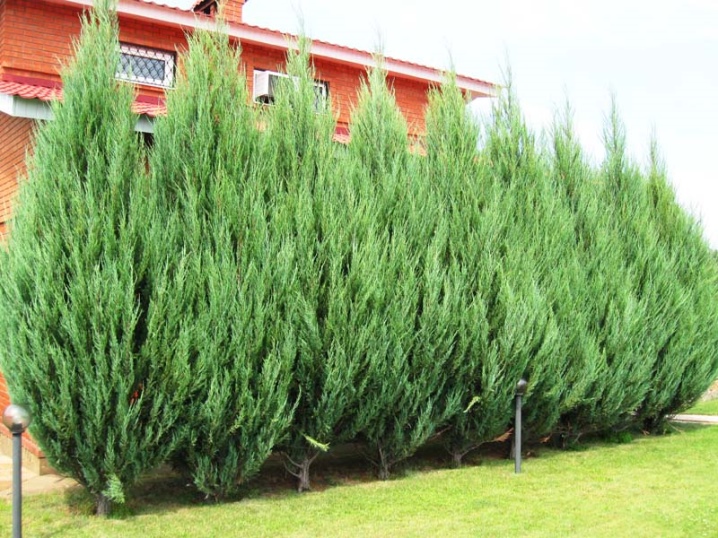
"Blue Arrow"
This variety is called the "Blue Arrow" for a reason. Bright blue needles and a narrow columnar crown give the impression of an arrow looking up into the sky. The culture grows up to 5 m.Diameter can reach 70 cm.
The plant is resistant to drought and frost, can grow on rocky ground. Suitable for growing on a trunk, creating various landscape compositions.
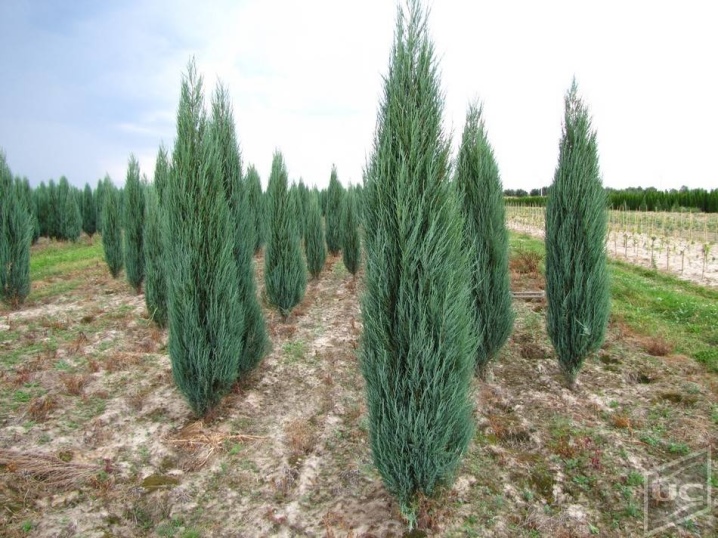
Chinese
This group appeared in eastern countries (Japan, China, Korea). Although some representatives reach 20 m in height, growth is slow. This allows such crops to be used for bonsai cultivation. Chinese plants are cold-resistant, but young seedlings are best sheltered for the winter. The level of soil fertility does not matter, but air humidity is important.
Its deficiency can negatively affect the development of culture.
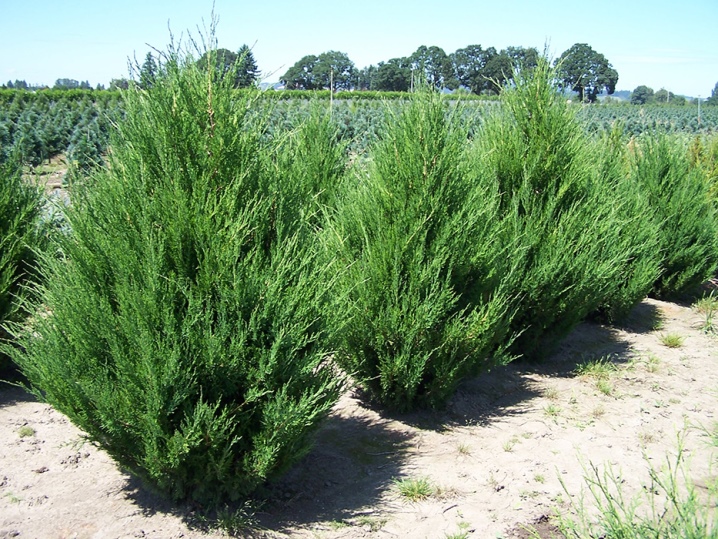
"Blau"
This is a low (up to 2.5 m) shrub. The crown is asymmetrical, spreading, and resembles a crown in shape. The diameter of the bush can reach 2 m. The color of the needles is rich green with a slight bluish tint. The plant develops ideally in partial shade, but can also grow in the sun.
The variety was originally used to decorate Japanese gardens. Today, city parks are also decorated with it, since the gas pollution in the air is not afraid of it.
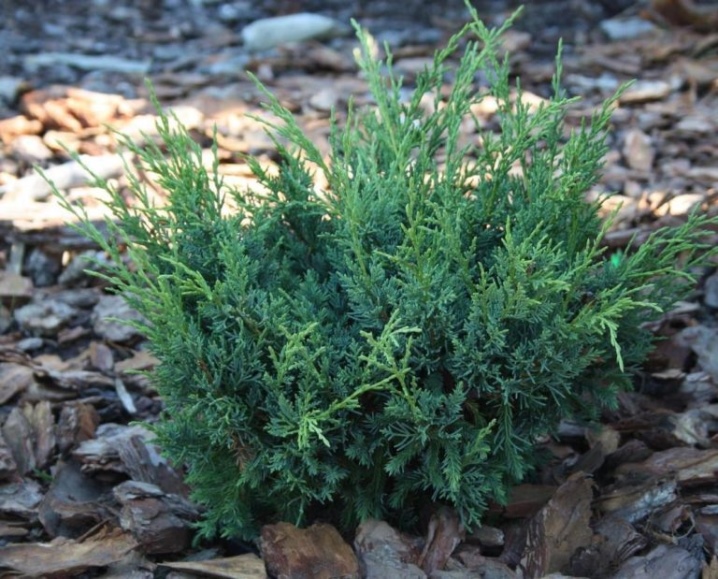
"Kurivao Gold"
This variety is known for its interesting color. Golden and green needles form a magnificent ornamental shrub. The height of an adult specimen can reach 3 m. The crown is wide, spreading (diameter reaches 1.5 m).
Shoots are asymmetrically located, growing up and to the sides. Nevertheless, the bush responds well to a haircut, which allows you to give it a beautiful shape.
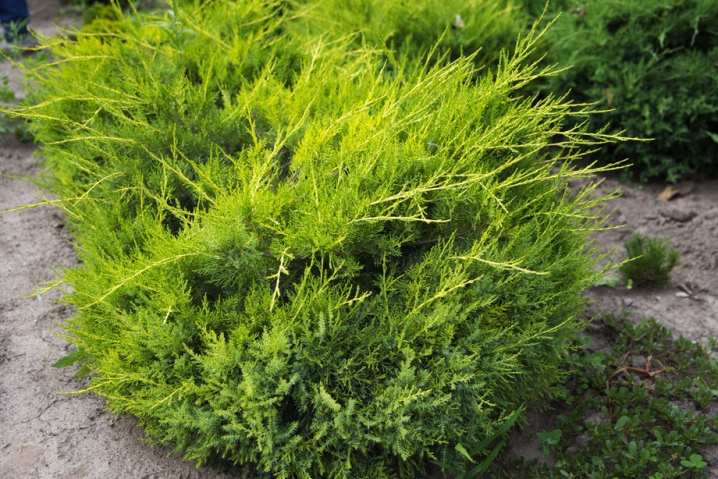
Daursky
This is a stunted shrub. Creeping branches. The maximum height is 0.5 m.Diameter can be up to 2 m.
Such a juniper is considered a ground cover. This means that shoots in contact with the ground take root. The most famous variety of Daurian culture is "Leningrad". This is a plant with dense prickly needles of a light green tone with a slight blue tint. The culture prefers open, bright places, loves sprinkling.
Such a juniper looks great in rock gardens, it is used to compose various floristic compositions.

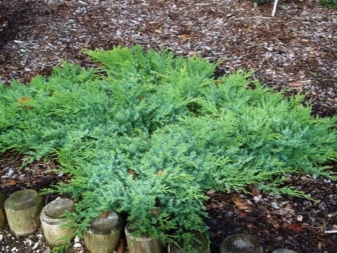
Horizontal (scaly)
This juniper is native to the Himalayas, China and Taiwan. Representatives of this group rarely grow above 1.5 m. Plants are light-requiring, prefer warm weather.
Of course, frost resistance allows them to tolerate cold down to -20 ° C. However, for the winter in such cases, it is necessary to organize a shelter for the plant.

"Blue Star"
The Blue Star variety is a beautiful bush with an unusual star-shaped shape. The needles have a silvery blue color, which makes the plant even more spectacular. The maximum crop height is 1 m.
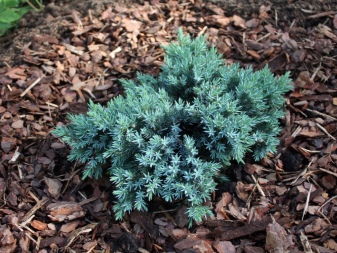

Golden Flame
Golden flame is a rather high variety for this group (1.8 m). Green-blue needles are diluted with light yellow blotches. This allows culture to become an interesting accent in the garden landscape. The plant has a spreading wide crown. It is better to plant it in a well-lit place, otherwise the decorative effect of the shrub will decrease, because the colors will not be so expressive.
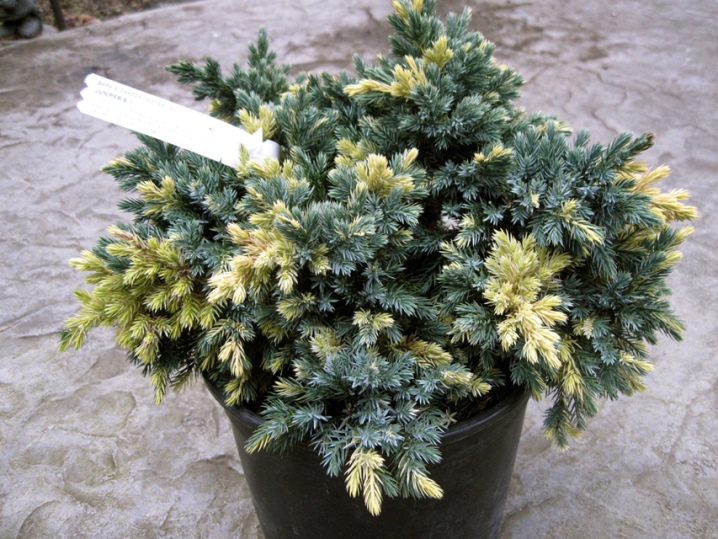
Average
This group combines hybrids of the Cossack and Chinese varieties. Some of them are the most popular.
"Mordigan Gold"
This is a low-growing, spreading shrub (no more than 1 m). Shoots are arranged horizontally. The crown is dense, rather wide (up to 2 meters in diameter). The color is green with a golden tint. The culture is unpretentious, resistant to adverse factors.
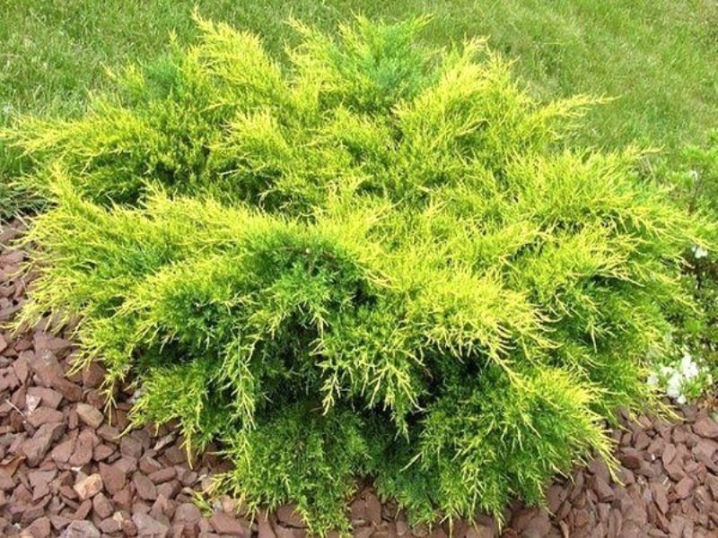
"Gold Coast"
It is a sprawling but small bush. The maximum height is 80 cm. The crown is dense, consists of several tiers. The branches are flexible, parallel to the ground.
The green color with a golden sheen persists throughout the year. However, in order to preserve the "gold" of the needles, the juniper should be planted in a sunny place. In the shade, the color will be ordinary - green.
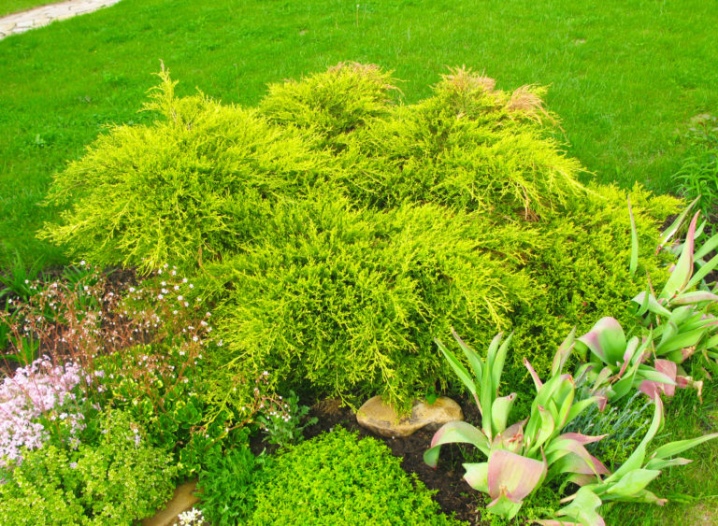
Goldkissen
This sprawling shrub has a beautiful feathery shape, grows up to 1 m. The diameter of an adult plant is about 2 m. Light green needles are complemented by golden scales. The needles are soft, but with strong pruning, they become coarser and darker. Blue berries, like all hybrids, are unsuitable for human consumption and even dangerous to health.
But the decorativeness of the plant is at a high level, which allows it to be used to decorate any territory.

Recumbent
We should also highlight the recumbent juniper "Procumbens Nana". It is distinguished by its short stature (up to 40 cm) and branches spread out on the ground. Low-lying shrub has long shoots (up to 150 cm in diameter) with greenish-silvery needles. The annual growth is 30 cm. Due to this, the formation of the crown provides a neat appearance of the bush for a long time.
The plant can withstand frost and drought, can be grown in almost any region of Russia. The rich, pleasant aroma is due to the release of essential oils by the culture. This makes the plant extremely beneficial to human health.
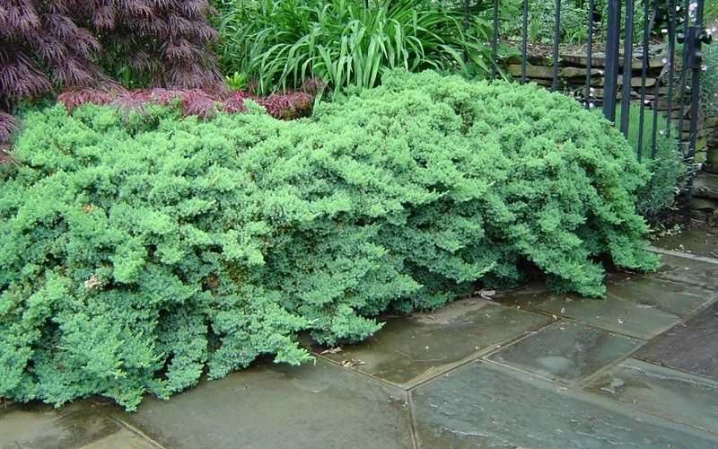
Other
It is worth mentioning here the "Sargent" juniper. This is a very rare species listed in the Red Book. In nature, it can be found in Japan, Korea and Sakhalin. And also it is grown in some reserves in our country. The plant forms a wide green carpet on the ground. There are no decorative forms of this type, so it is not easy to acquire such planting material.
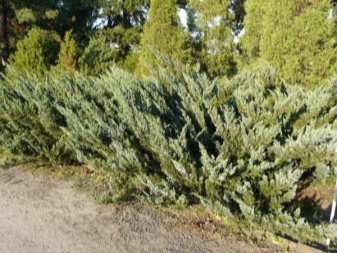
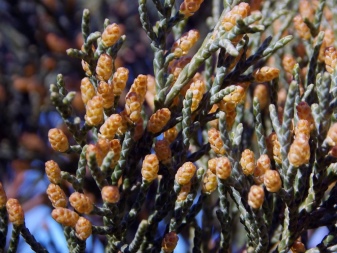
We take into account the climatic zone
When choosing a juniper variety for a garden, it is worth considering the climatic conditions. in which it will be grown. For example, in the Moscow region the climate is not too harsh. Representatives of many groups (ordinary, Cossack, mountain and others) can take root here.
In colder places, some varieties may die. Therefore, when choosing a variety, it is important to find out all its main characteristics (level of winter hardiness, requirements for air humidity, and so on).
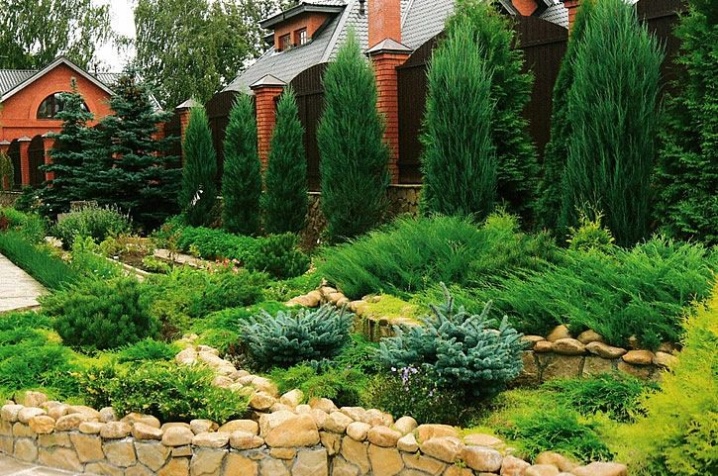
Most junipers are cold tolerant. However, in the first years of the life of a culture, it is recommended to warm it before the onset of winter. To do this, you can use burlap, spruce branches. And also it should be borne in mind that in the northern regions, the best time for planting is spring. In this case, the seedling has time to take root and get a little stronger in order to calmly endure the cold period.
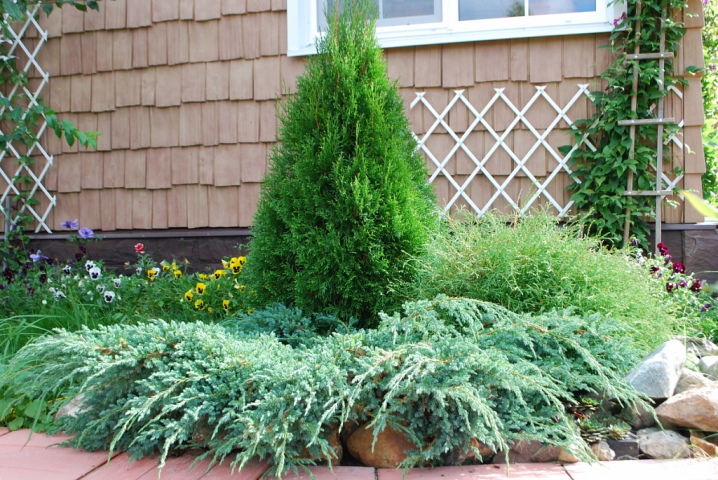
Selection Tips
In addition to climatic conditions, there are other points to consider when choosing a suitable juniper option. Think about what you need a culture for, where it will be located, what decorative function to perform. The desired height of the plant and its shape depend on this.
For example, large tree-like specimens in the form of a cone or column look great both as independent plantings and as central elements of landscape compositions surrounded by smaller plants. They are also good in group plantings. Tall junipers make great hedges. Dense needles allow you to create ideal natural fences that are impenetrable to prying eyes.
And you can also decorate the entrance to the terrace or relaxation area with graceful trees.
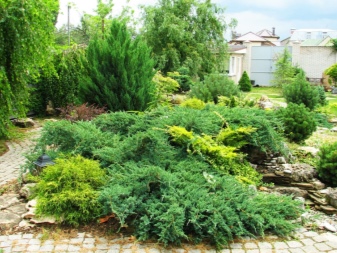

Low-growing varieties can be combined with flowers. They are used to decorate slopes, flower beds, alpine slides, rose gardens. Weeping species look especially beautiful near reservoirs. Small varieties with a neat haircut can also fit well into a near-water composition. Bonsai-style dwarf plantations will decorate an oriental-style garden.
They look equally harmonious in decorative containers and outdoors.
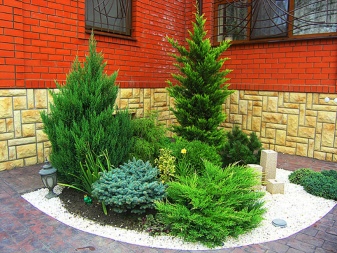

You can focus on the unusual color of culture. Against the background of greenery, junipers with a crown of bluish-silver, ash, golden shades look expressive. You can take several different types and combine them into an interesting composition. Due to the difference in shape and color, each plant will look exotic and spectacular.
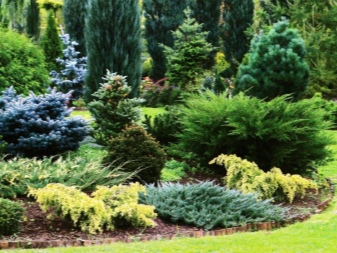

A few words should be said about the choice of a seedling. Of course, you can grow your own culture. However, purchasing a specimen from a nursery or specialty store saves time.
You don't have to wait 3 years before moving the plant outdoors. You will eliminate the risk of marriage and non-compliance with varietal characteristics. In addition, professionally grown plants take root better in an open area.
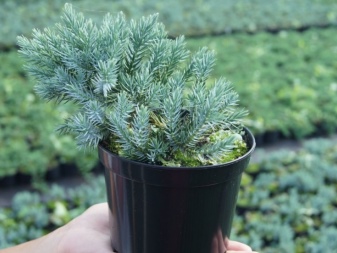
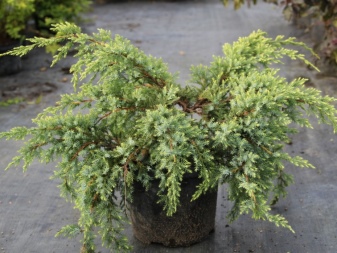
When purchasing a seedling, you should pay attention to a few highlights.
- It is best to keep the plant in a container. Let's say the option with an earthen lump wrapped in burlap.
- Check the barrel for cracks or damage.
- The shoots must be strong and resilient.
- The needles must have a uniform color corresponding to the variety. Brown spots and white flakes on the crown are not allowed.
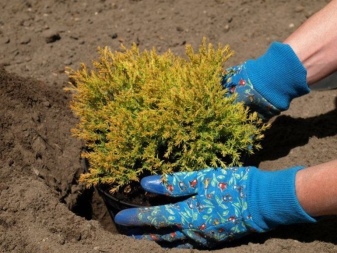
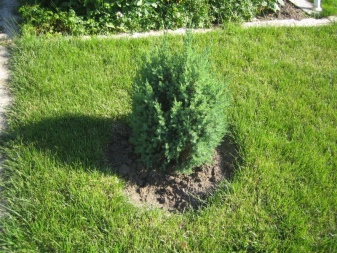
The following video will tell you how to properly care for a juniper.



































































The comment was sent successfully.